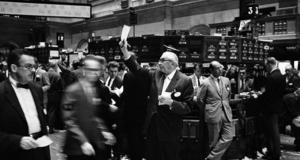Factors that Limit Regulatory Response in the Wake of the Global Financial Crisis: Ideology, Regulatory Capture, and Power Dynamics
By
2015, Vol. 7 No. 09 | pg. 1/3 | » Since the financial crisis of 2007, regulators have recognized the necessity for global governance in an increasingly interconnected global economy. Many have praised the extent to which regulators have already minimized the damage of the crisis through reforms introduced by Basel III and cooperation from G20 countries and are optimistic about the capacity of regulators to address the causes that led to the crisis (Drezner, 2012; Bengtsson, 2013; Jones, 2010; Bradford, Lin, 2011). The purpose of this paper is to put such optimism under scrutiny by critically evaluating factors that limit regulatory response and suggesting that these factors will continue to constrain the ability of regulators to avert a future crisis. The essay begins by contextualizing the crisis. Then it makes a distinction between two sets of causes. The first set of causes lie within the finance industry. These include creation of collateralized debt obligations (CDOs), inflated ratings, moral hazard problems, and the Wall Street-Treasury complex.The second set of causes lie within an increasingly interconnected capitalist economic system. These factors include the dominance of market fundamentalist ideology, easy access to credit in the US due to globalization, and economic instability due to excess fictitious capital and irrational exuberance. Finally, I argue that systemic risks inherent in an increasingly interconnected capitalist world economy are insufficiently addressed by regulatory reactions to the global financial crisis due to three factors: theoretical neglect of systemic risk by macro-prudential regulation, regulatory capture during the Basel III process, and the hegemonic power of the US to choose not to strengthen international organizations. The Crisis in ContextBy now, the narrative of the crisis has been well reported (McLean, Nocera, 2011). Signs of a financial crisis were evident in 2007. First, real estate price across US began to fall sharply as defaults in the subprime mortgages rapidly increased. Institutions that invested in securities backed by these mortgages (known as mortgage backed securities, MBS) saw their value disappear, and investors all over the world were concerned that a bull market would not return. Then international financial markets began to freeze because investors attempted to unload MBS to reap what they could, but in so doing exacerbated the loss of value of these securities. Confidence in the market waned, and it epitomize in UK through a bank run on Northern Rock. Loss of confidence in the market would not be exclusive to UK. In US, the investment bank Lehman Brothers collapsed, and Bern Stearns had to be rescued through a takeover by J.P. Morgan Chase with the assistance of the Federal Reserve. The US government, in order to bring some confidence into the market and to minimize what it could of the damage being done, nationalized the mortgage lending institutions Fannie Mae and Freddie Mac, as well as bailed out the insurance company the American International Group (AIG). But the damage was done. The combination of events in 2007 and 2008 led to significant decline in asset values in markets around the world. Many financial institutions that invested in the MBS while maintaining high leverage became insolvent and collapsed. Moreover, the damage was not exclusive to the finance sector. In the real economy, trade among countries plummeted and millions of jobs were lost. GM, for example, was forced to bankruptcy due to drop in sales, volatility in oil prices, and heavy reliance on investment as capital gain through its financial subsidiary (Webster, 2008). In fact, it has been a trend that companies in manufacturing increasingly rely on the finance sector as an important source of income (Krippner, 2005). Hence when the finance sector collapsed, it translated into loss in the real economy. The damage was not exclusive to the finance sector as many economies around the world were forced into recessions (Reinhart, Camern and Keneth, 2009). The underlying causes will now be analyzed. Causes within the Finance IndustryCreation of Innovative Financial Products that met the Demand for Higher YieldsIn an economic environment where interest rate was low, for institutional investors there were few reliable financial products that could offer consistently rewarding yields. Securities backed by subprime mortgages were precisely the rewarding alternative to traditional government bonds (Ashton, 2009). The highest rated, and thus safest, AAA rated tranche of collateralized debt obligation (CDOs) backed up by subprime mortgages offered yield of 5.48 percent. This is significantly higher than the 4.78 percent of a 10-year US Treasury note, especially when the investments made were in the millions (Bajaj, 2006). Hence, for conservative investors such as pension funds and insurance companies they created a significant demand for innovative products that were based on subprime mortgage. Indeed, CDOs were such innovation. Prior to the 1980s, individuals who wanted to buy a house got a mortgage from a local bank. After the 1980s, individuals go to an originator who makes the initial loan. Then the originators sell the loan to the underwriters such that they have the liquidity to make further loans. The underwriters package a group of loans together into CDOs in a process called securitization, meaning the packages of mortgages has been turned into an asset that pays a fixed rate of return based on the payment of individuals who pay their mortgage. During the process of packaging loans are divided into tranches, and they are rated based on the riskiness of the default on one’s mortgage. CDOs allowed for pooling of not only MBS, but also other streams of income such as corporate debt. They are subsequently managed by servicers, who would collect the monthly mortgage payments and distribute them to bond holders (Fligstein, Goldstein, 2010). Large investment banks were happy to package mortgages into CDOs, because packaging securities generated high fees. Moreover, by 2002, banks realized that they could earn money holding onto MBS. For instance, banks could borrow money at a low interest rate, lend the money for mortgages and create a MBS that yield a higher interest rate. They were in essence earning money twice on borrowed money. Therefore, the demand for yield was met by supply of innovative financial products such as CDOs, and large investment banks on Wall Street were supportive of the growth of such innovations. Inflated Ratings of Securities by Credit Rating Agencies (CRAs)The innovations only paved the foundation to the crisis. Another contributing cause was the failure of CRAs. The function of CRAs is to objectively provide a standardized assessment of the likeliness that a debtor will default on liabilities owed to creditors (McVea, 2010). They assign ratings to specify the likeliness for such default. AAA represents the highest rating, meaning that the probability for default is low. This is followed by AA, A, then BBB and so on with increase in risk of default. The idea is that these ratings are indicative of the riskiness of investments and help to reduce asymmetric information especially when investors are not fully familiar with the assets that back securities. CRAs facilitated the growth of CDOs because they failed to remain objective as rating securities was an important source of their revenue. In 2006, structured finance accounted for 43.5 percent percent of Moody’s (one of the big three CRAs in the US) overall revenues (Morgenson, 2008). If issuers were unsatisfied with the rating assigned to the CDO, then they could go to another CRA. To avoid souring business relations, CRAs had little incentive to downgrade outstanding securities or re-review assets that back the securities. Thus, the CRAs were competing for business by offering the lowest threshold of standard. In so doing, the objectivity inherent in their function was compromised. When the underlying value of MBS was based on mortgages with high risk, they were nonetheless rated highly. By 2004, the MBS market experienced a drop in mortgage originations due to an oversaturated prime market. To continue capitalizing on the demand for MBS, loan originators explored the subprime market, which consisted of people with poor credit histories. By 2005, originators of mortgages did more than half their business in the subprime market. To accompany MBS based on subprime mortgages, CRAs overrated significantly. For example, around half of B/C and Alt-A securities from 2004 were subject to downgrades of at least two notches after the crisis (Fligstein, Goldstein, 2010). This reveals that MBS that were rated to be secure were in fact quite risky. Investors around the world were in essence misled by CRAs. Rampant Moral Hazard Problems that Spread Risk Across Financial InstitutionsSelling risky securities contrary to the interest of investors is what Dowd describes as moral hazard (Dowd, 2009). In Liar’s Poker Lewis, an insider at Salomon Brothers, reveals that it is part of the corporate culture of investment banks to unload risk associated with junk bonds to others (Lewis, 1989). Similar problems occurred during the crisis. For example, investment banks such as Goldman Sachs bought credit-default swaps (CDS) from AIG. These are insurance contracts that offloaded the risk of defaulting mortgage owners to AIG. AIG, by taking on the risk, earns a steady fee. Knowing that the subprime delinquency rate was high, Goldman Sachs protected themselves against the loss of value of MBS. Indeed, AIG had bared the cost as during the midst of the crisis several banks, including Goldman Sachs, sought to draw on their insurance. AIG ran out of short term funds and it had to be bailed out by tax payers (Mishkin, 2011). Risk was therefore spread from one financial institution to another (Kuotsai, 2014). Another instance of moral hazard is short selling the equity tranche of CDOs. CDOs were commonly divided into three tranches. The equity tranche was the riskiest tranche with the highest return, but it would shoulder any loss of value of the underlying asset first. This is followed by the mezzanine tranches and the senior tranches, which were rated less risky and more insular from defaults. Because the equity tranche was not appealing to institutional investors, by 2005 some hedge funds made trades where if the equity tranche performed, they could yield upwards of 20 percent; if they failed, then the short position could make them even more (McLean, Nocera, 2011). In other words, money could be made either way. But originators now had an incentive to become predatory, for more money could be made should the riskiest tranche fail. Investment banks could in effect bet for the default of the most vulnerable class of mortgage buyers while offloading the risk through CDS. Indeed, this is precisely what Goldman Sachs did at the expense of its clients and AIG. When the subprime delinquency rate increased rapidly, it led to a ripple effect where intuitions who shared the risks were subject to loss. Biased Regulation due to Regulatory CaptureOne reason Washington looked the other way was due to regulatory capture. The technicality of understanding the finance industry has made those who work on Wall Street exceptional candidates for regulatory positions at the Treasury Department (Bhagwati, 1998). The appointment of Hank Paulson, a former CEO of Goldman Sachs, as the 74th Secretary of Treasury exemplifies this. This type of regulatory capture, also known as Wall Street Treasury complex, is problematic in two ways. First, the capacity for such regulator to remain accountable when he may regulate his former colleagues is questionable. There may be conflicts of interest that result but remain unknown to the public which then hinder his accountability. Second, the extent to which such regulator will not become susceptible to lobbyists is also questionable. Indeed, bank lobbyists with technical expertise could in fact enter the regulatory body as ideal candidates and shape policy from within in accordance to deregulatory ideologies that favor Wall Street.Continued on Next Page » Suggested Reading from Inquiries Journal
Inquiries Journal provides undergraduate and graduate students around the world a platform for the wide dissemination of academic work over a range of core disciplines. Representing the work of students from hundreds of institutions around the globe, Inquiries Journal's large database of academic articles is completely free. Learn more | Blog | Submit Latest in Political Science |


















